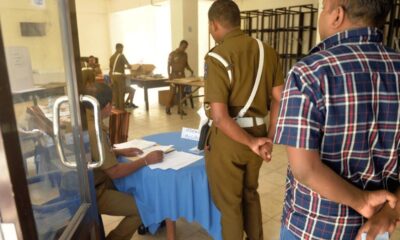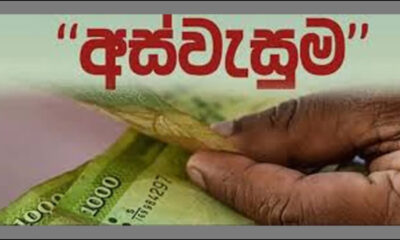FEATURES
“Year of killing and broken assumptions has taken Middle East to edge of deeper, wider war”
Published
9 months agoon
By
editor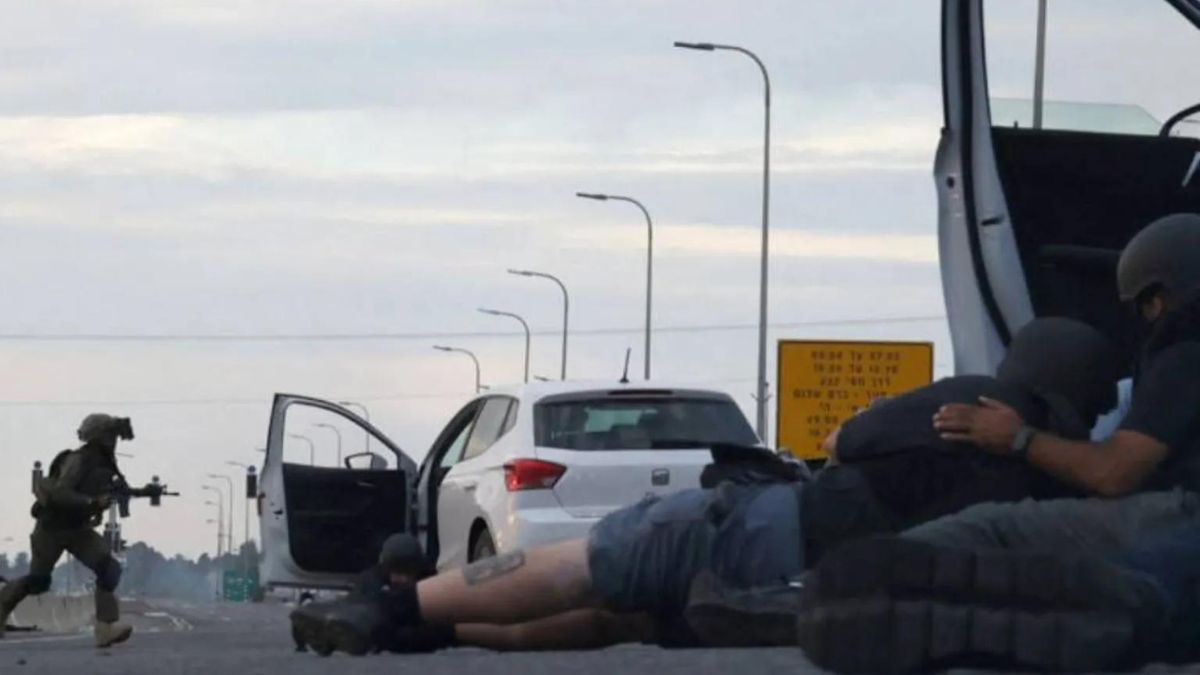
Millions of people in the Middle East dream of safe, quiet lives without drama and violent death. The last year of war, as bad as any in the region in modern times, has shown yet again that dreams of peace cannot come true while deep political, strategic and religious fault lines remain unbridged. Once again, war is reshaping the politics of the Middle East.
The Hamas offensive came out of well over a century of unresolved conflict. After Hamas burst through the thinly defended border, it inflicted the worst day the Israelis had suffered.
Around 1,200 people, mostly Israeli civilians, were killed. Israel’s prime minister, Benjamin Netanyahu, phoned President Joe Biden and told him that “We’ve never seen such savagery in the history of the state”; not “since the Holocaust.” Israel saw the attacks by Hamas as a threat to its existence.
Since then, Israel has inflicted many terrible days on the Palestinians in Gaza. Nearly 42,000 people, mostly civilians have been killed, according to the Hamas-run health ministry. Much of Gaza is in ruins. Palestinians accuse Israel of genocide.
The war has spread. Twelve months after Hamas went on the offensive the Middle East is on the edge of an even worse war; wider, deeper, even more destructive.
The death of illusions
A year of killing has stripped away layers of assumptions and illusions. One is Benjamin Netanyahu’s belief that he could manage the Palestinian issue without making concessions to their demands for self-determination.
With that went the wishful thinking that had comforted Israel’s worried Western allies. Leaders in the US and UK, and others, had convinced themselves that Netanyahu, despite opposing a Palestinian state alongside Israel all his political life, could somehow be persuaded to accept one to end the war.
Netanyahu’s refusal reflected almost universal distrust of Palestinians inside Israel as well as his own ideology. It also torpedoed an ambitious American peace plan.
President Biden’s “grand bargain” proposed that Israel would receive full diplomatic recognition by Saudi Arabia, the most influential Islamic country, in return for allowing Palestinian independence. The Saudis would be rewarded with a security pact with the US.
The Biden plan fell at the first hurdle. Netanyahu said in February that statehood would be “huge reward” for Hamas. Bezalel Smotrich, one of the ultra-nationalist extremists in his cabinet, said it would be an “existential threat” to Israel.
The Hamas leader, Yahya Sinwar, presumed to be alive, somewhere in Gaza had his own illusions. A year ago, he must have hoped that the rest of Iran’s so-called “axis of resistance” would join, with full force, into a war to cripple Israel. He was wrong.
Sinwar kept his plans to attack Israel on 7 October so secret that he took his enemy by surprise. He also surprised some on his own side. Diplomatic sources told the BBC that Sinwar might not even have shared his plans with his own organisation’s exiled political leadership in Qatar. They had notoriously lax security protocols, talking on open lines that could be easily overheard, one source said.
Far from going on the offensive, Iran made it clear it did not want a wider war, as Israel invaded Gaza and President Biden ordered American carrier strike groups to move closer to protect Israel.
Instead, Hassan Nasrallah, and his friend and ally, Iran’s supreme leader Ayatollah Ali Khamenei, restricted themselves to rocketing Israel’s northern border, which they said would continue until a ceasefire in Gaza. The targets were mostly military, but Israel evacuated more than 60,000 people away from the border. In Lebanon, perhaps twice as many had to flee over the months as Israel hit back.
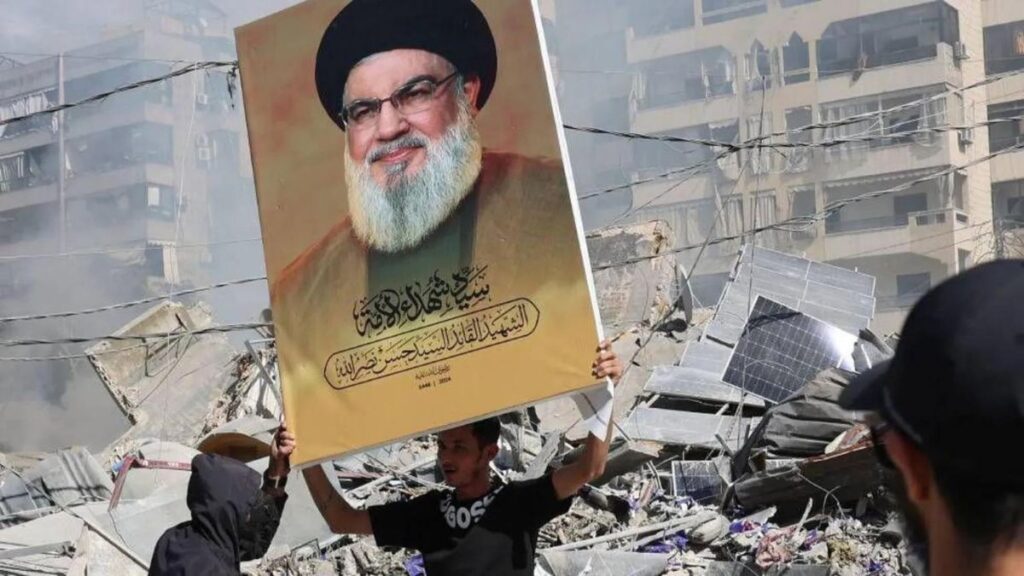
Hassan Nasrallah, seen here on a placard held by a young man in Beirut, after his death, was key to Iran’s “axis of resistance”
Israel made clear it would not tolerate an indefinite war of attrition with Hezbollah. Even so, the conventional wisdom was that Israel would be deterred by Hezbollah’s formidable fighting record in previous wars and its arsenal of missiles, provided by Iran.
In September, Israel went on the offensive. No one outside the senior ranks of the Israel Defense Forces (IDF) and the Mossad spy agency believed so much damage could be inflicted so quickly on Iran’s most powerful ally.
Israel remotely exploded booby-trapped pagers and radios, destroying Hezbollah’s communications and killing leaders. It launched one of the most intense bombing campaigns in modern warfare. On its first day Israel killed about 600 Lebanese people, including many civilians.
The offensive has blown a big hole in Iran’s belief that its network of allies cemented its strategy to deter and intimidate Israel. The key moment came on 27 September, with the huge air strike on the southern suburbs of Beirut that killed Hassan Nasrallah, the leader of Hezbollah and many of his top lieutenants. Nasrallah was a vital part of Iran’s “axis of resistance”, its informal alliance and defence network of allies and proxies.
Israel broke out of the border war by escalating to a bigger one. If the strategic intention was to force Hezbollah to cease fire and pull back from the border, it failed. The offensive, and invasion of south Lebanon, has not deterred Iran.
Iran seems to have concluded that its open reluctance to risk a wider war was encouraging Israel to push harder. Hitting back was risky, and guaranteed an Israeli response, but for the supreme leader and Iran’s Revolutionary Guards, it had become the least bad option.
On Tuesday 1 October, Iran attacked Israel with ballistic missiles.
A repository of trauma
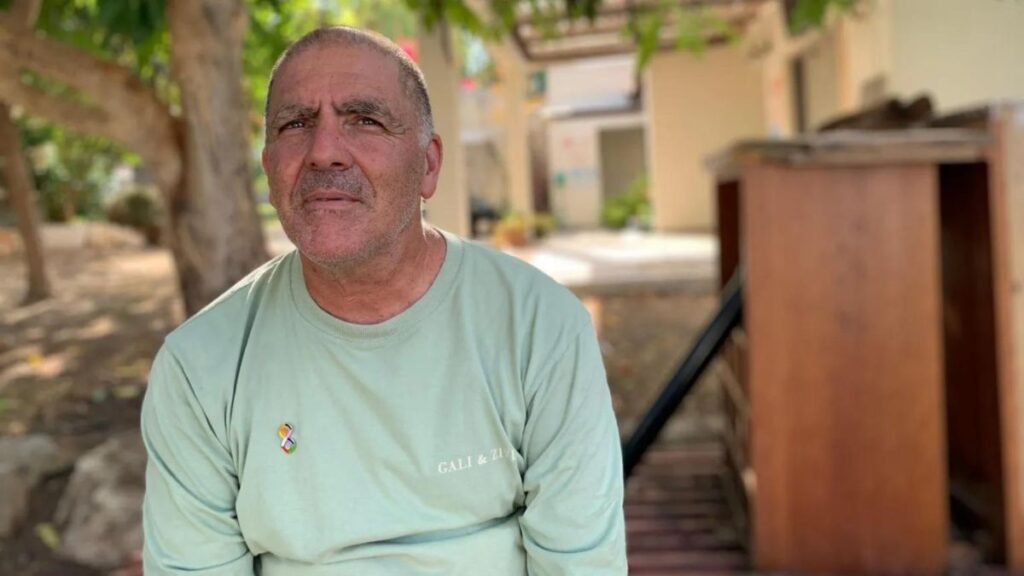
Zohar Shpak is still reliving the Hamas attack on 7 October
Kibbutz Kfar Aza is very close to the wire that was supposed to protect Israel’s border with the Gaza Strip. The kibbutz was a small community, with modest homes on an open-plan campus of lawns and neat gardens. Kfar Aza was one of Hamas’s first targets on 7 October. Sixty-two people from the kibbutz were killed by Hamas. Of the 19 hostages taken from there into Gaza, two were killed by Israeli troops after they escaped from captivity. Five hostages from Kfar Aza are still in Gaza.
The Israeli army took journalists into Kfar Aza on 10 October last year, when it was still a battle zone. We saw Israeli combat troops dug into the fields around the kibbutz and could hear gunfire as they cleared buildings where they suspected Hamas fighters might be sheltering. Israeli civilians killed by Hamas were being carried out in body bags from the ruins of their homes. Hamas fighters killed by Israeli soldiers as they fought their way into the kibbutz still lay on the neat lawns, turning black as they decomposed in the strong Mediterranean sun.
A year later the dead are buried but very little has changed. The living have not returned to live in their homes. Ruined houses have been preserved as they were when I saw them on 10 October last year, except the names and photos of the people who lived and were killed inside them are displayed on big posters and memorials.
Zohar Shpak, a resident who survived the attack with his family, showed us round the homes of neighbours who were not as lucky. One of the houses had a large photo on its wall of the young couple who lived there, both killed by Hamas on 7 October. The ground around the houses has been dug over. Zohar said the young man’s father had spent weeks sifting earth to try to find his son’s head. He had been buried without it.
The stories of the dead of 7 October, and the hostages, are well known in Israel. Local media still talk about their country’s losses, adding new information to old pain.
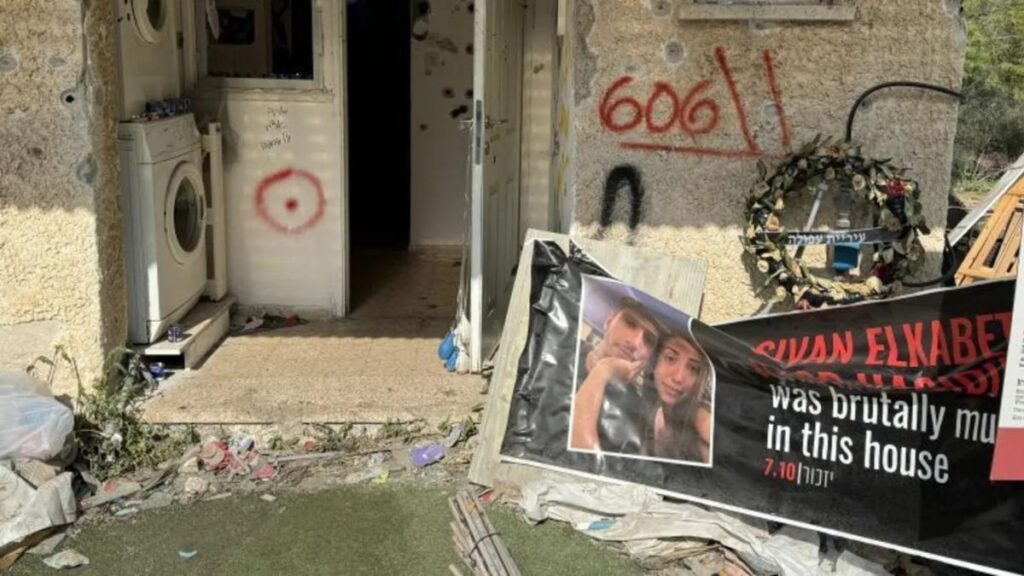
Posters marking the horror are fading
Zohar said it was too early to think about how they might rebuild their lives.
“We are still inside the trauma. We are not in post-trauma. Like people said, we’re still here. We are still in the war. We wanted the war will be ended, but we want it will be ended with a victory, but not an army victory. Not a war victory.
“My victory is that I could live here, with. My son and daughter, with my grandchildren and living peacefully. I believe in peace.”
Zohar and many other Kfar Aza residents identified with the left wing of Israeli politics, meaning that they believed Israel’s only chance of peace was allowing the Palestinians their independence. Israelis like Zohar and his neighbours are convinced that Netanyahu is a disastrous prime minister who bears a heavy responsibility for leaving them vulnerable and open to attack on 7 October.
But Zohar does not trust the Palestinians, people he used to ferry to hospitals in Israel in better times when they were allowed out of Gaza for medical treatment.
“I don’t believe those people who are living over there. But I want the peace. I want to go to Gaza’s beach. But I don’t trust them. No, I don’t trust any one of them.”
Gaza’s catastrophe
Hamas leaders do not accept that the attacks on Israel were a mistake that brought the wrath of Israel, armed and supported by the United States down on to the heads of their people. Blame the occupation, they say, and its lust for destruction and death.
In Qatar, an hour or so before Iran attacked Israel on 1 October, I interviewed Khalil al-Hayya, the most senior Hamas leader outside Gaza, second only in their organisation to Yahya Sinwar. He denied his men had targeted civilians – despite overwhelming evidence – and justified the attacks by saying it was necessary to put the plight of the Palestinians on the world’s political agenda.
“It was necessary to raise an alarm in the world to tell them that here there is a people who have a cause and have demands that must be met. It was a blow to Israel, the Zionist enemy.”
Israel felt the blow, and on 7 October, as the IDF was rushing troops to the Gaza border, Benjamin Netanyahu made a speech promising a “mighty vengeance”. He set out war aims of eliminating Hamas as a military and political force and bringing the hostages home. The prime minister continues to insist that “total victory” is possible, and that force will in the end free the Israelis held by Hamas for a year.
His political opponents, including relatives of the hostages, accuse him of blocking a ceasefire and a hostage deal to appease ultra-nationalists in his government. He is accused of putting his own political survival before the lives of Israelis.
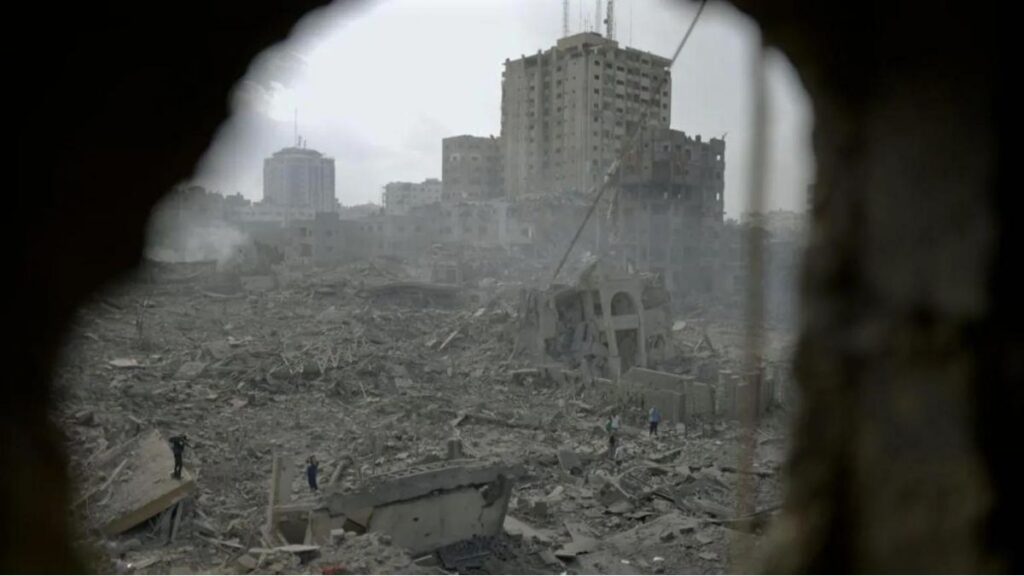
Many of Gaza’s once-thriving communities are now desolate
Netanyahu has many political enemies in Israel, even though the offensive in Lebanon has helped repair his poll numbers. He remains controversial but for most Israelis the war in Gaza is not. Since 7 October, most Israelis have hardened their hearts to the suffering of Palestinians in Gaza.
Two days into the war, Israel’s Defence Minister, Yoav Gallant, said he had ordered a “complete siege” of the Gaza Strip.
“There will be no electricity, no food, no fuel, everything is closed… We are fighting human animals and we are acting accordingly.”
Since then, under international pressure, Israel has been forced to loosen its blockade. At the United Nations at the end of September, Netanyahu insisted Gazans have all the food they need.
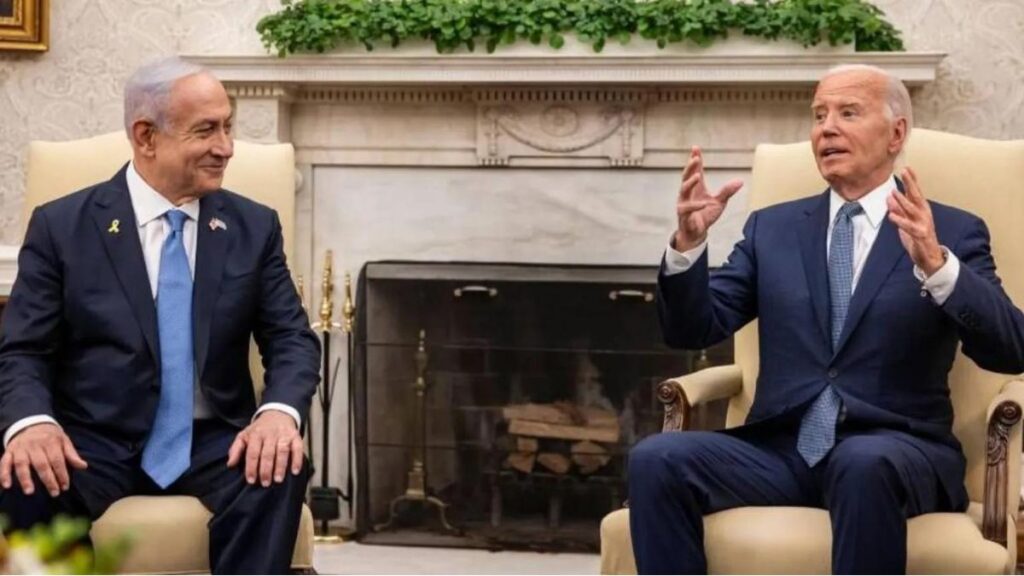
Benjamin Netanyahu and Joe Biden in July – Biden’s role, restraining Israel while also supplying weapons, risks dragging the US into a wider war
The evidence shows clearly that is not true. Days before his speech, UN humanitarian agencies signed a declaration just demanding an end to “appalling human suffering and humanitarian catastrophe in Gaza”.
“More than 2 million Palestinians are without protection, food, water, sanitation, shelter, health care, education, electricity and fuel – the basic necessities to survive. Families have been forcibly displaced, time and time again, from one unsafe place to the next, with no way out.”
– Jeremy Bowen : International editor, BBC News
(BBC News)
You may like
FEATURES
Asweddumized fields and sizzling kottu roti: New words from Sri Lanka
Published
1 week agoon
June 26, 2025By
editor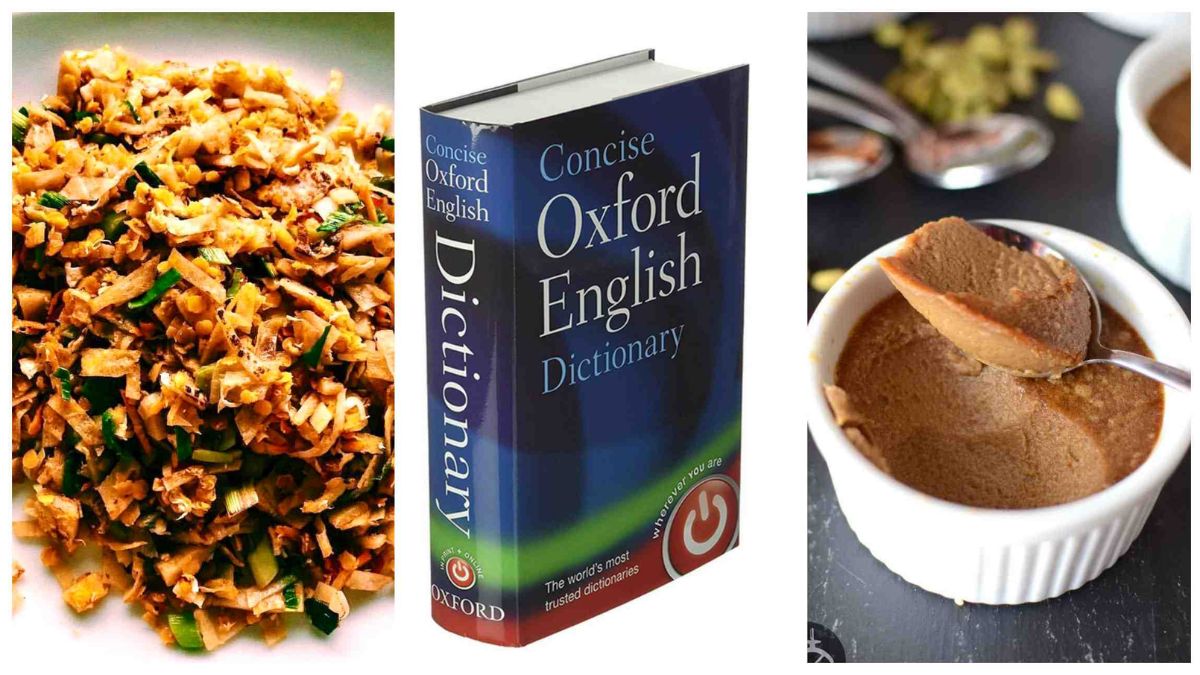
In a letter dated 7 October 1971 and sent from Panadura, Ceylon, OED contributor Pearl Cooray wrote to then Chief Editor Robert Burchfield: ‘I have looked up references for the word asweddumize and have succeeded to a certain extent. The Sinhala word aswedduma means “land recently converted into a paddy field”, and the Anglicized word asweddumize means to prepare a field for sowing paddy’. Cooray was a Sri Lankan academic who visited Burchfield in Oxford earlier in 1971, and upon returning to her country and her position in the Dictionary Department of the University of Ceylon, briefly corresponded with the OED, sending the above quoted letter as well as a selection of Sri Lankan newspapers and magazines for the reading programme for the OED Supplements that were in preparation at the time. Her suggestion for asweddumize would have been too late for the word to be considered for Volume I of the Supplements, so Burchfield wrote the word and definition on a paper slip, the main means by which words were tracked until the 2010s, and filed it alongside an earlier slip from July 1970 with the same suggestion from another Sri Lankan contributor, D. N. Ponnamperuma.
Nothing further is found about asweddumize in the OED’s files until 1986, when botanist D. J. Mabberley, a regular consultant for the Supplement, sent in a quotation slip for the word, which he would have encountered during the time he spent at a university in Sri Lanka. A decade later, another slip records the decision made not to draft an entry for asweddumize due to lack of evidence. ‘Omit (sadly)’was the responsible editor’s regretful note on the slip.
Almost thirty years later, this sad omission has finally been rectified, with the addition of asweddumize to the OED as part of this update. Current OED Sri Lankan English consultant Rochana Jayasinghe’s research on Pearl Cooray and her contributions to the Supplement helped put asweddumize back on the OED’s radar, and now that the dictionary’s editors have wider access to historical and contemporary Sri Lankan sources than their counterparts in the 1970s and 80s, it was possible to find sufficient evidence for the word, including a first quotation from as far back as 1857.
Joining asweddumize among this batch of new words are other borrowings from Sinhala, the Indo-Aryan language primarily spoken by the Sinhalese, the largest ethnic group in Sri Lanka. Mallung (first attested 1893) is lightly cooked, shredded (often leafy green) vegetables mixed with fresh grated coconut, chilli, and other spices, served as a side dish, salad, or condiment as part of a typical Sri Lankan meal, while kiribath (1886) is a Sri Lankan dish made with rice cooked in coconut milk and formed into a block, typically sliced into diamond-shaped pieces and served with various types of onion relish or sweetened with jaggery. Kiribath is traditionally eaten at special occasions such as Avurudu (1881), the first day of the Sinhala and Hindu New Year, occurring on the spring equinox (usually falling around 14 April), marked by a period of celebration typically lasting for seven to ten days.
Other Sri Lankan English words in this update originate both in Sinhala and another widely spoken language on the island, Tamil. Kottu roti (1991) is a Sri Lankan dish consisting of pieces of roti, meat, and vegetables, mixed with spices and curry sauce, and chopped by cleavers as they are cooked on a griddle. It is typically associated with the distinctive sound of the cleavers hitting the griddle as it is prepared by roadside vendors, and its name combines the Tamil word kottu ‘chopped’ with the Sinhala word roṭi ‘bread’. Partly a borrowing from Sinhala and partly a borrowing from Tamil, watalappam (1956) is a custard made from coconut milk (or sometimes condensed milk), cashew nuts, eggs, and spices such as cardamom and cloves, sweetened with jaggery and traditionally eaten by Sri Lankan Muslims during celebrations marking the end of Ramadan.
Sri Lankan music is represented by the words baila (1973) and papare (2006). Baila, a loan word from Portuguese, refers to an uptempo style of popular music originating in Sri Lanka which combines influences from both Africa and Europe, typically played in 6-8 time, with a syncopated rhythm, as well as to the style of dance performed to this music. Often associated with weddings and other celebrations, types of baila music are also popular in Goa and in the city of Mangaluru, on India’s west coast. Papare, on the other hand, is a genre of Sri Lankan music usually played at cricket and other sports matches, characterized by lively rhythms and typically featuring instrumentation of trumpet, saxophone, trombone, and snare and bass drums.
Apart from adding new Sri Lankan English words, OED editors have also revised a number of existing Sri Lankan English entries in the dictionary. Both these new and revised entries have been given transcriptions and audio pronunciations based on a new pronunciation model for Sri Lankan English, which is explained in more detail in this article. These enhancements to the OED’s coverage of Sri Lankan English help provide a more complete picture of how the language is used islandwide.
Full list of World English additions and revisions in the OED June 2025 update
(oed.com)
FEATURES
Dog-sized dinosaur that ran around feet of giants discovered
Published
1 week agoon
June 25, 2025By
editor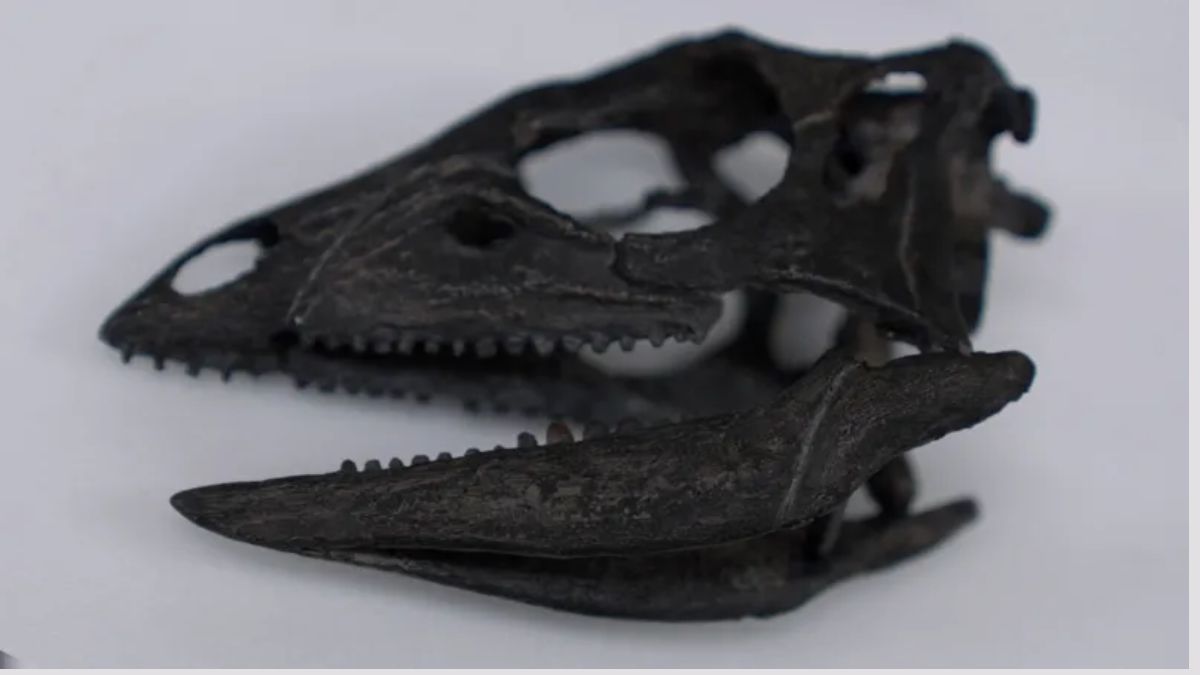
The full name of the new species is Enigmacursor mollyborthwickae dinosaur
A labrador-sized dinosaur was wrongly categorised when it was found and is actually a new species, scientists have discovered.
Its new name is Enigmacursor – meaning puzzling runner – and it lived about 150 million years ago, running around the feet of famous giants like the Stegosaurus.
It was originally classified as a Nanosaurus but scientists now conclude it is a different animal.
On Thursday it will become the first new dinosaur to go on display at the Natural History Museum (NHM) in London since 2014.
BBC News went behind the scenes to see the dinosaur before it will be revealed to the public.
The discovery promises to shed light on the evolutionary history that saw early small dinosaurs become very large and “bizarre” animals, according to Professor Paul Barrett, a palaeontologist at the museum.
When we visit, the designer of a special glass display case for the Enigmacursor is making last-minute checks.
The dinosaur’s new home is a balcony in the museum’s impressive Earth Hall. Below it is Steph the Stegosaurus who also lived in the Morrison Formation in the Western United States.
Enigmacursor is tiny by comparison. At 64 cm tall and 180 cm long it is about the height of a labrador, but with much bigger feet and a tail that was “probably longer than the rest of the dinosaur,” says Professor Susanna Maidment.

The Enigmacursor was a small dinosaur that lived alongside some of the biggest known
“It also had a relatively small head, so it was probably not the brightest,” she adds, adding that it was probably a teenager when it died.
With the fossilised remains of its bones in their hands, conservators Lu Allington-Jones and Kieran Miles expertly assemble the skeleton on to a metal frame.
“I don’t want to damage it at this stage before its revealed to everybody,” says Ms Allington-Jones, head of conservation.

Conservators Lu Allington-Jones and Kieran Miles assembled the dinosaur onto a frame for display
“Here you can see the solid dense hips showing you it was a fast-running dinosaur. But the front arms are much smaller and off the ground – perhaps it used them to shovel plants in its mouth with hands,” says Mr Miles.
It was clues in the bones that led scientists at NHM to conclude the creature was a new species.
“When we’re trying to identify if something is a new species, we’re looking for small differences with all of the other closely-related dinosaurs. The leg bones are really important in this one,” says Prof Maidment, holding the right hind limb of the Enigmacursor.
When the dinosaur was donated to the museum it was named Nanosaurus, like many other small dinosaurs named since the 1870s.
But the scientists suspected that categorisation was false.
To find out more, they travelled to the United States with scans of the skeleton and detailed photographs to see the original Nanosaurus that is considered the archtype specimen.
“But it didn’t have any bones. It’s just a rock with some impressions of bone in it. It could be any number of dinosaurs,” Professor Maidment said.

Susanna Maidment travelled to the US to look at the original Nanosaurus dinosaur
In contrast, the NHM’s specimen was a sophisticated and near-to-complete skeleton with unique features including its leg bones.
Untangling this mystery around the names and categorisation is essential, the palaeontologists say.
“It’s absolutely foundational to our work to understand how many species we actually have. If we’ve got that wrong, everything else falls apart,” says Prof Maidment.
The scientists have now formally erased the whole category of Nanosaurus.
They believe that other small dinosaur specimens from this period are probably also distinct species.
The discovery should help the scientists understand the diversity of dinosaurs in the Late Jurassic period.
Smaller dinosaurs are “very close to the origins of the large groups of dinosaurs that become much more prominent later on,” says Prof Barrett.
“Specimens like this help fill in some of those gaps in our knowledge, showing us how those changes occur gradually over time,” he adds.
Looking at these early creatures helps them identify “the pressures that finally led to the evolution of their more bizarre, gigantic descendants,” says Prof Barrett.

The fossilised remains are the most complete of any in the world for early small dinosaurs
The scientists are excited to have such a rare complete skeleton of a small dinosaur.
Traditionally, big dinosaur bones have been the biggest prize, so there has been less interest in digging out smaller fossils.
“When you’re looking for those very big dinosaurs, sometimes it’s easy to overlook the smaller ones living alongside them. But now I hope people will keep their eyes close to the ground looking for these little ones,” says Prof Barrett.
The findings about Enigmacursor mollyborthwickae are published in the journal Royal Society Open Science.
– Georgina Rannard
Science correspondent
(BBC News)
FEATURES
JVP-NPP should learn difference between “marine research” & “surveillance”
Published
2 weeks agoon
June 21, 2025By
editor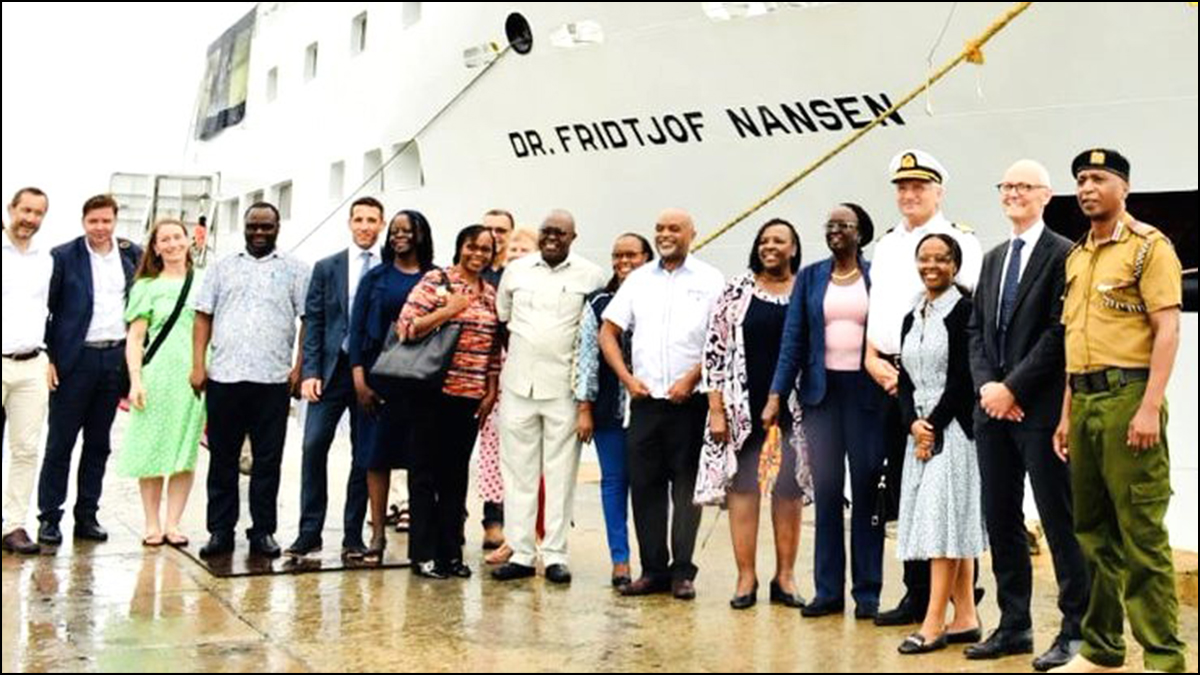
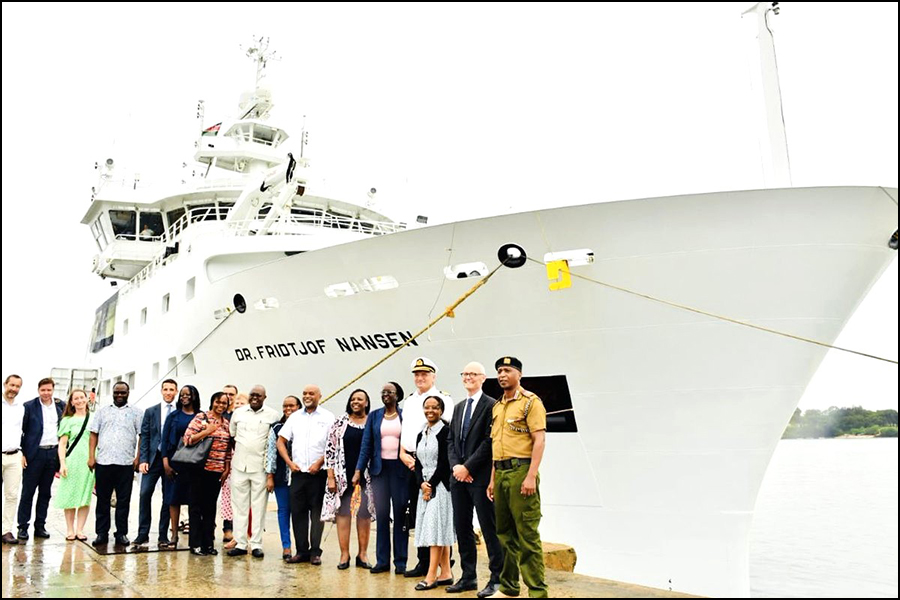
There’s now an apparent stand-off between the UN FAO and the Foreign Affairs Minister Vijitha Herath on the request made by the FAO to have permission for the UN flagged “Dr. Fridtjof Nansen” marine research vessel to enter Sri Lankan waters. Minister Herath is on record saying the request would have to wait till the Committee on Standard Operating Procedures (SOP) for foreign research vessels appointed by him and perhaps chaired by him too, complete their task in formulating the SOP. It was revealed, the SOP Committee is yet to be convened for the first time. With “Dr. Fridtjof Nansen” marine research vessel waiting in Mauritius to set sail to Sri Lanka, numerous discussions the UN had with the Foreign Ministry (FM) since April has only reached the point, where the SL FM agreed to allow the ship to pick Bangladeshi “Scientists” from Colombo, but not get involved in any research in our waters.
res (SOP) for foreign research vessels appointed by him and perhaps chaired by him too, complete their task in formulating the SOP. It was revealed, the SOP Committee is yet to be convened for the first time. With “Dr. Fridtjof Nansen” marine research vessel waiting in Mauritius to set sail to Sri Lanka, numerous discussions the UN had with the Foreign Ministry (FM) since April has only reached the point, where the SL FM agreed to allow the ship to pick Bangladeshi “Scientists” from Colombo, but not get involved in any research in our waters.
What’s this whole calamity over a FAO marine research ship requesting permission to enter Sri Lankan waters? Someone somewhere at the helm of the Foreign Ministry, or the Foreign Minister himself has wholly misinterpreted the issue of country owned research ships visiting Sri Lanka and the moratorium that was imposed by President Wickramasinghe barring foreign research ships.
Sri Lanka was pressured by India and the US to curtail if not stop Chinese research ships from docking in our ports in the past few years. Special concerns were over the 02 research ships “Yuan Wang 5” that docked at Hambantota in early 2022 during Gotabhaya’s presidency and “Shi Yan 6” in October 2023 at the Colombo port during Wickramasinghe’s presidency. It was said, these 02 research ships had the capacity for surveillance and monitoring the region. Under pressure especially from New Delhi, President Wickramasinghe decided to impose a one year moratorium on foreign research ships visiting Sri Lanka, effective from early January 2024.
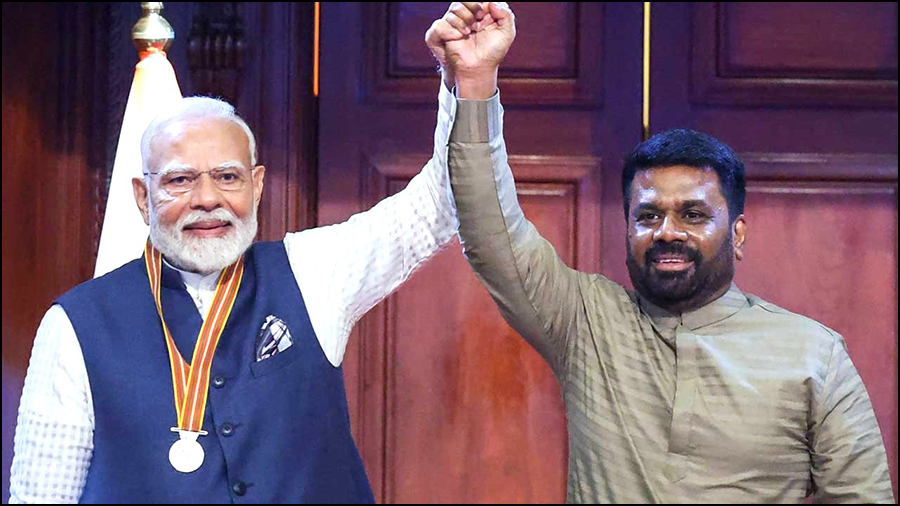
The Wickramasinghe moratorium came to its end on 05 January 2025, as the JVP-NPP government did not extend it further. Reason to allow the moratorium to lapse in January, may have been on a strictly confidential agreement reached to have a separate bi-lateral agreement on defence, during President Anura Kumara’s maiden official visit to India in mid-December 2024. Defence had been an issue discussed with Indian authorities during President Anura Kumara’s Indian visit, wrote Dr. Samatha Mallempati of “Indian Council of World Affairs” in May 2025. A defence MoU would thus make the moratorium irrelevant thereafter. PM Modi was to visit Sri Lanka 04 months later in early April this year. One among the many MoUs the 02 governments signed during PM Modi’s visit was the first ever Memorandum of Understanding (MoU) on “defence co-operation”.
India began working on a defence strategy for Indian Ocean Region (IOR) since the conclusion of Sri Lanka’s North-East civil war in 2009. New Delhi was very much concerned over President Rajapaksa’s post-war association with not only China, but with Pakistan too. Both with long time hostile border disputes with India. Contributing an article to “Stimson.org” on Pakistan-Sri Lanka relations in March 2021, two researchers on South & East Asian geo-politics Riaz Khokhar and Asma Khalid wrote, “In 2016, Pakistan signed a defense agreement with Sri Lanka to provide Colombo with eight JF-17 fighter aircrafts. Pakistani and Sri Lankan armies and naval forces have also regularly interacted through port calls, military and naval training and exercises, and defense workshops and seminars. In the recent high-level visit to Colombo, the Pakistani premier offered a USD $50 million credit line to Sri Lanka to further enhance defense and security partnerships.”
South Asian geo-politics did have new developments with post-war Sri Lanka compromising its economic needs with defence and national security in challenging the Tamil Diaspora canvassed US-Euro resolutions at UNHRC Sessions. Rajapaksa government was required to accept independent international investigations on war crimes and crimes against humanity, with many top military officers named. Pakistan stood with Sri Lanka, voting against all such resolutions at every UNHRC Session, while the Rajapaksa regime joined the Belt and Road Initiative of China, and was financially supported by China. Financial support that led to the popular adage “Sri Lankan type Chinese debt trap”.
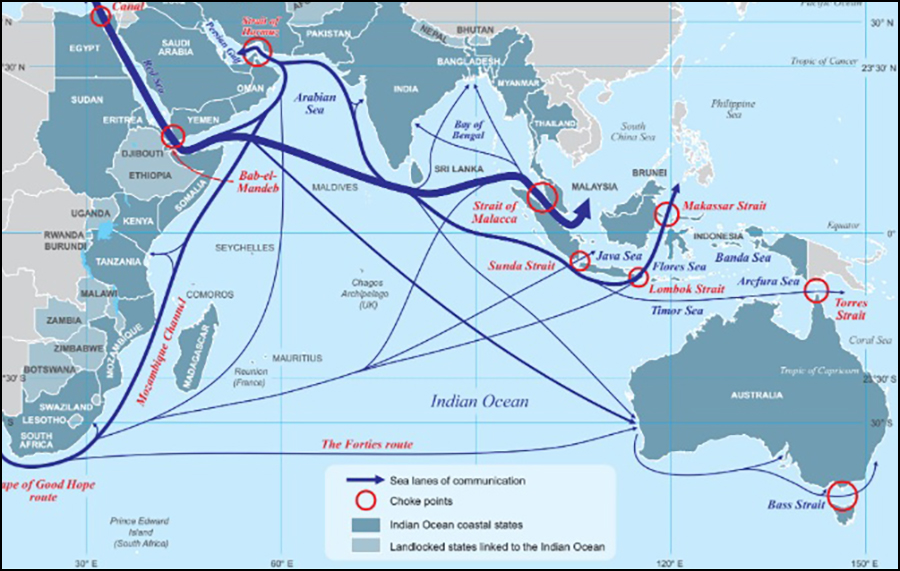
India has since been working towards establishing its dominance in the IOR keeping Sri Lanka as its focal point. Highlighting the geo-political importance of Sri Lanka, Dr. Samatha Mallempati wrote, “Since the region accounts for fifty percent of world maritime trade and seventy percent of global trade in oil and gas, there is a greater need to safeguard the sea lanes of communication. The increasing strategic significance of island states in the region therefore assumed importance. The island states such as Sri Lanka is looking to play a much bigger role by leveraging their geographical location.”
The perception in New Delhi that Sri Lanka is leveraging its geographical location to define geo-politics in the IOR, was what paved for the MoU on defence co-operation India signed with Sri Lanka, that for 05 years would provide India adequate space to influence Sri Lankan geo-politics in its favour. But the fact is, all these agreements and treaties are about IOR peace and stability and the influence “foreign countries” may have in it. The Sri Lankan moratorium was also about research ships of foreign countries, docking in our ports.
How would the UN flagged marine research ship “Dr. Fridtjof Nansen” interfere in IOR stability and peace? The request to FAO for marine research in our waters had gone from the SL Government, never mind who led the government. FAO is focussed on sustainable fisheries management and this modern, fully equipped ship for marine research is used mainly in African and Indian Ocean waters in collaboration with NORAD to support developing countries with research based fisheries management. That perhaps was the only reason for the previous government to request the FAO to visit Sri Lankan waters. Mind you, that request for FAO to undertake marine research in our waters, went out while the moratorium on foreign research ships was fully effective.
Whatever the bureaucracy at the FM says, a seasoned politician like Vijitha Herath who had been in parliament for 25 years to date from year 2000, should know the difference between this UN flagged marine research ship and other research ships owned by individual countries. Anything flagged as “UN” is common property of 195 sovereign nation States who are UN members. This ignorance therefore very clearly exhibits the JVP/NPP leadership as the most intellectually timid leadership to have been voted to power since 1948 independence.
Kusal Perera
20 June, 2025

‘Sisu Sariya’ bus driver, conductor suspended after student falls

Govt to approve import of 300,000 MT of maize







